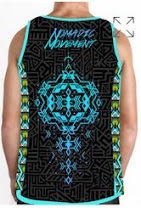[Here is the 100th TTAB decision this year in a Section 2(d) appeal. So far the Board has reversed four of the refusals.] The USPTO refused to register the mark THE NOMADIC MOVEMENT for entertainment services featuring travel and sustainable living, finding confusion likely with the registered mark NOMADIC MOVEMENT for "Headwear; Headwear, namely, hats and caps; Hoodies; Shorts; T-shirts; Tank tops; Hooded sweat shirts." How do you think this appeal came out? In re Jordan Saglio, Serial No. 88593965 (May 31, 2022) [not precedential] (Opinion by Judge Peter W. Cataldo).
The Marks: The word THE is "generally not significant in distinguishing one mark from another." Applicant Saglio argued that NOMADIC MOVEMENT connotes roaming from place to place, whereas THE NOMADIC MOVEMENT connotes the advancement of a shared idea of abandoning traditional home and work like for mobile, technology-based life anywhere. The Board noted, however, that there was no evidence of record to support a finding that addition of the word THE has such an impact on the connotations of applicant's mark. Moreover, even if the marks have different connotations, the similarity in appearance and sound would still strongly support a finding of likely confusion.
The Goods and Services: Examining Attorney Marlene Bell submitted evidence of third-party use of the same mark and trade name to identify the source of entertainment services and clothing: NINJA KIDZ!, THE PACK, DOCTOR WHO, GAME OF THRONES, SQUID GAME, NATIONAL GEOGRAPHIC, and SMITHSONIAN. She also submitted thirty use-based registrations covering both clothing and entertainment services.
Applicant Saglio argued that the Examining Attorney's rationale would prevent use of any mark similar to a clothing brand, for any goods, because mark holders typically use their marks on apparel for promotional purposes. The Board pointed out that here the evidence showed the current licensing and marketing practices of providing ancillary goods as tie-ins to entertainment services).
Channels of Trade: Applicant Saglio attempted to distinguish the actual channels of trade, but there were no limitations in the application or cited registration as to trade channels, and so the Board must presume that the involved services and goods travel in all normal channels. Moreover, the evidence established at least on common trade channel: websites of entertainment outlets and content producers who also market promotional clothing items.
Conclusion: Finding confusion likely, the Board affirmed the refusal to register.
The content of this article is intended to provide a general guide to the subject matter. Specialist advice should be sought about your specific circumstances.



